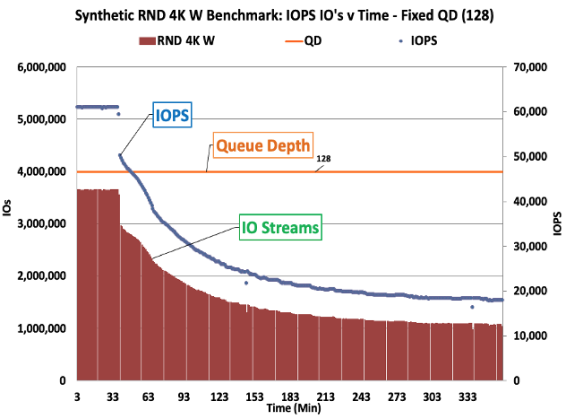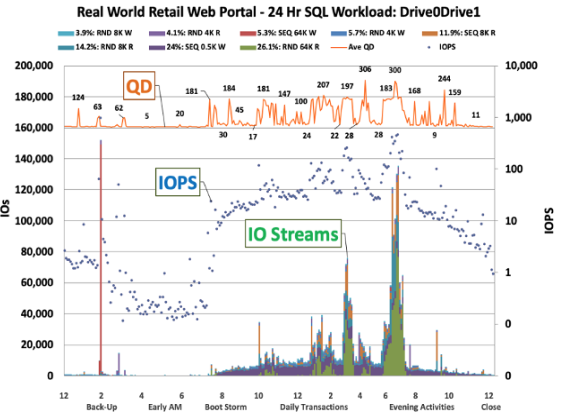Real World Workloads are the collection of IO (Input/Output) Streams observed between two points in the Software/Hardware (SW/HW) stack that occur during real world application use. Real World Workloads are typically observed between User space (applications) and Storage at the file system or block IO level.
Real World Workloads are popular because they are comprised of IO Streams observed during real world application use cases. Storage performance is highly dependent on the workloads, or IO Streams, that are applied to storage.
Real World Workloads are very different from synthetic workloads and affect performance in very different ways.
Storage that is optimized using synthetic workloads does not have the same performance as storage that is exposed to Real World Workloads. This is because Real World Workloads are comprised of constantly changing combinations of many IO Streams and varying Demand Intensity (or Queue Depth) over time whereas synthetic workloads apply a fixed number of IO Streams and Demand Intensity over a fixed duration.
Indeed, Real World Workloads are intended to emulate the IO Streams and Demand Intensity observed during real world use whereas synthetic workloads are intended to stress storage outside the range of normal operation.
Synthetic Corner Case

Real World Application

Recent SNIA Solid State Storage Performance Test Specifications (PTS) have enumerated standard practices for the capture, analysis and test using Real World Workloads. The SNIA Compute, Storage & Memory Initiative (CMSI) and the Solid State Storage Technical Working Group (S3 TWG) periodically publish reference real world workloads deemed to represent common application use cases.
The Introduction to Real World Workloads-A Primer provides details on capturing and viewing Real World Workloads and types of tests.
The CMSI and S3 TWG also encourage users to collaborate in the collection of new Real World Workload IO Captures. Interested parties can contact the CMSI (askcmsi@snia.org) or the S3 TWG (tcmd@snia.org).








